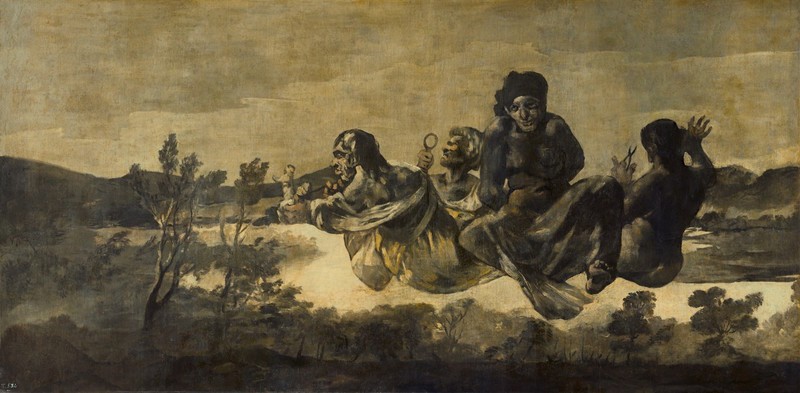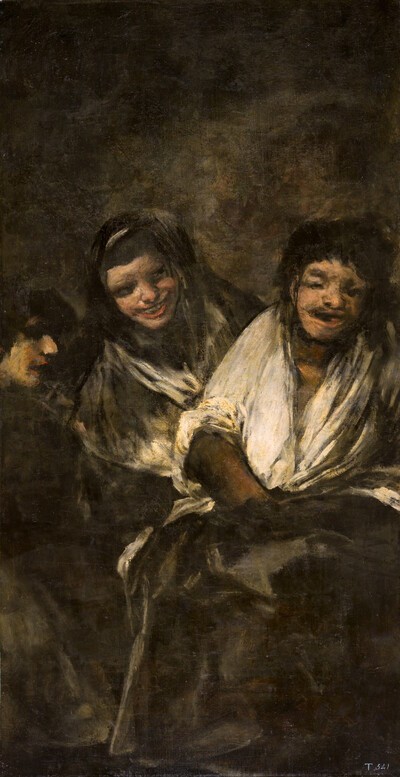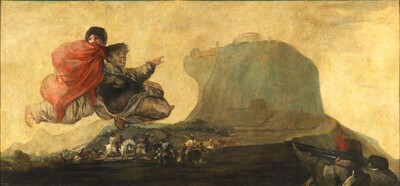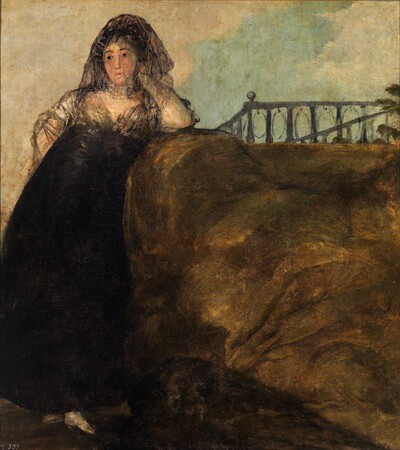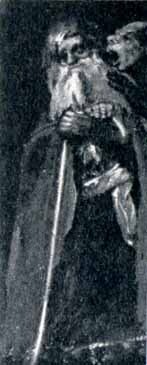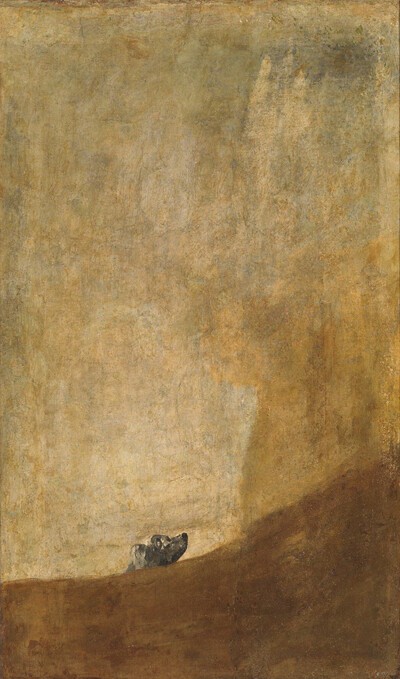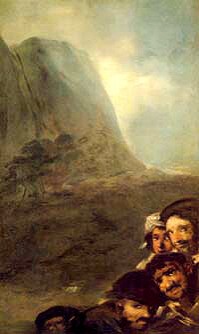- Cronología
- Ca. 1820 - 1823
- Ubicación
- The Prado National Museum. Madrid, Madrid, Spain
- Dimensiones
- 123 x 266 cm
- Técnica y soporte
- Oil painting on plaster transferred to canvas
- Reconocimiento de la autoría de Goya
- Undisputed work
- Titular
- El Prado National Museum
- Ficha: realización/revisión
- 27 Oct 2010 / 04 Mar 2024
- Inventario
- (P00757)
- Otros títulos:
-
Atropos (Átropos)
Fate (El Destino)
See Leocadia.
This painting was located on the first floor of the house, on the left-hand wall. It is a large composition dominated by the main figures in a scene that seems to be taking place at night. The figures are superimposed on a primitive landscape. They represent the Fates, the Daughters of the Night who control the thread of human life. In this work they are shown floating on a cloud, accompanied by a man whose arms are held behind his back. Atropos can be identified as the figure on the right of the painting from the scissors she is holding: according to Arnaiz, she is making a rude gesture with her fingers which could be interpreted as the painter mocking death. Clotho, who is usually depicted spinning the thread of life, in this case holds a doll in her hands - perhaps as a sacrifice - which is attached to her right hand by a thread. In the background is Lachesis: she normally holds the thread of life, although here she is shown with an object in her hand which has been interpreted variously as a magnifying glass with which she examines the thread of life, a mirror symbolizing time and transience or a snake biting its tail, a symbol of eternity.
The lighting of the scene is striking, since it seems to be bathed in moonlight which picks out the objects carried by the Fates.
It has not been possible to find a global explanation for the scene; however, the identification of Atropos as the Fates by Brugada and Yriarte was very clear, and is the reason behind the title they gave to the painting. According to Bozal, the symbolic meaning of the Fates is altered by the changes Goya introduces in his representation, as well as by its relationship with the other Black Paintings.
The figure of Atropos is the one that underwent the most changes due to the intervention of Martínez Cubells: based on x-ray analysis, it is believed that he overpainted a tear in the paint in the area of that figure.
-
Pinturas Negras en la Exposición Universal de ParísPalacio del TrocaderoParís1878from may 20th to November 10th 1878
-
Goya. 250 AniversarioMuseo Nacional del PradoMadrid1996consultant editor Juan J. Luna. From March 29th to June 2nd 1996cat. 165
-
Goya, sa vie, son œuvreParísHenri Plon1867pp. 140-141
-
Goya, pintor de retratos, t. IMadridBlass y Cía1916pp.122-127
-
Vie et ouvre de Francisco de GoyaParísOffice du livre1970pp. 327-329, cat. 1615
-
BarcelonaPolígrafa1970vol. I, p. 378, cat.708
-
Goya's Black Paintings: Truth and Reason in Light and LibertyNew YorkHispanic Society of America1984p. 88-94
-
Goya. 250 AniversarioMadridMuseo del Prado1996p. 432
-
Las pinturas negras de Goya, AlcobendasT.F. Editores1997p.87-88
-
Las Pinturas Negras de GoyaLondonScala Publishers Ltd.2003p. 82-83
